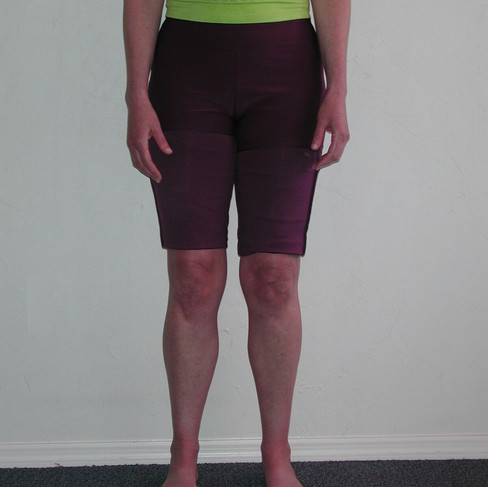Alignment: The Key to Pain Relief

Knee pain. Headaches. Low back pain. Shoulder pain. Such common ailments! What to do long-term for these chronic aches and pains? Quite often, pains such as these have one thing in common: misalignment.
Alignment is all about stacking the bones in a biomechanically sound way. An architect looks at a structure and makes sure that the columns are vertical and the foundation is solid. A biomechanically inclined yoga teacher will make sure that the bones are lined up in the body at the angle they should be for optimal performance.
What can misalign us? Repetition: Poor posture over many years is a common cause of misalignment. Trauma: falling with impact (e.g. off a bike or skis). Congenital diseases such as scoliosis. The cause of the misalignment will often determine the success in the treatment: misalignments that are many years old and created with much force (trauma) or congenitally will take the longest to rectify.
Figures 1 and 2 (top left, top right) show some very common postural misalignments that can lead to pain. Notice in Figure 1 (top left) the knees are caving in slightly towards the middle, not stacked directly underneath the hips and above the ankles (Fig. 3, bottom left) as they should be for optimal alignment. This “caving in” at the knees is often accompanied by “flat feet” or “fallen arches” which can also result in foot or ankle discomfort.
Figure 2 (top right) shows the most common spinal misalignment which results in compression in both the cervical spine (just below the head), and the lumbar spine (the lower back). As a result, the muscles of the thoracic spine (mid-back) are overly lengthened and weak. The compression in the neck can decrease blood flow to the head creating severe headaches. Compression in the lower back can create lower back pain, and the weak spinal muscles between the shoulder blades will often result in what some people have referred to as an "ice pick” sensation between the shoulder blades.
Figures 3 and 4 (bottom left, bottom right) shows proper alignment after therapy.
Yoga therapy* for these issues would include a series of postures tailored to the individual and the situation. The postures typically begin as subtle movements and as they are mastered, the movements become increasingly more challenging. The goal with these exercises is to lengthen muscles that are creating compression and strengthen muscles that need to support the load. If a condition is severe and has been many years in the making, it is often necessary to combine exercises with corrective massage work. This type of massage targets the hyper-constricted muscles. As these contracted muscles begin to relax, the opposing muscles can strengthen and take on the load of the work.
The alignment of any structure, whether it is a house or the human body, is what keeps it standing strong and living pain free. Good, solid materials and a solid foundation keep a structure standing through all sorts of conditions: high winds, earthquakes, snow loads, and injuries of all sorts.
If you have an injury and would like to set up a consultation, Paola can be contacted at bozemanhealingarts.com. She is available for therapeutic consultations, as well as private consultations to set up your personalized home practice, and teaches private and group yoga classes. Check the website for class schedules.
* The process we call yoga was traditionally taught in India, where it originated, as a private consultation. Here in the West, we are used to going to a group class where we get our yoga work-out. In India, originally, yoga was a form of physical therapy (and psychotherapy too!), to be administered on a one-on-one basis between the patient and the practitioner, with the patient’s needs very closely checked. With the advent of group classes here in the West, however, this ability to tailor to a student’s needs directly has dwindled substantially. Paola’s private practice, however, harks back to the original intent of yoga. She works closely with her patients, has a keen eye to observe the misalignments, the skills to verify whether changes are effective, and is able to make long-term adjustments.




























